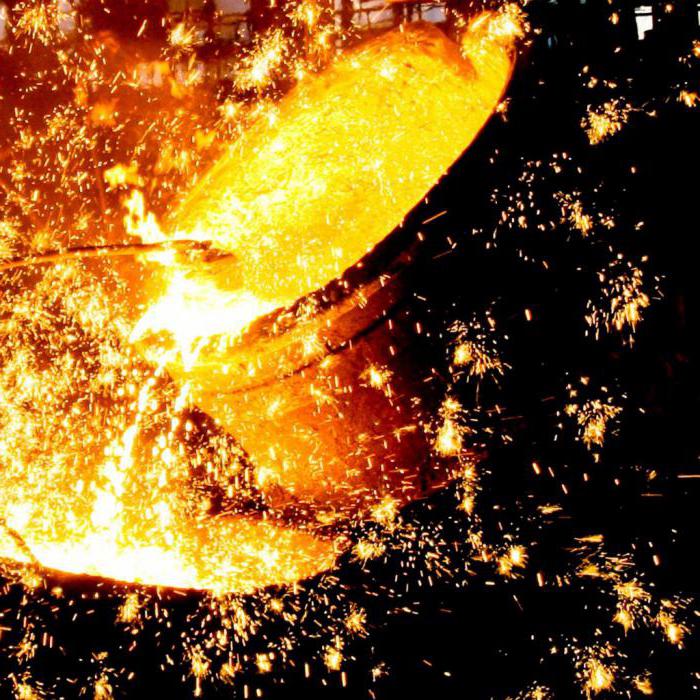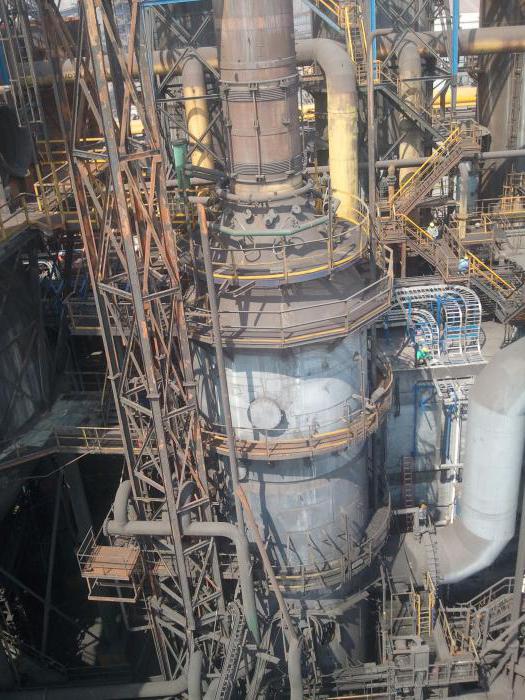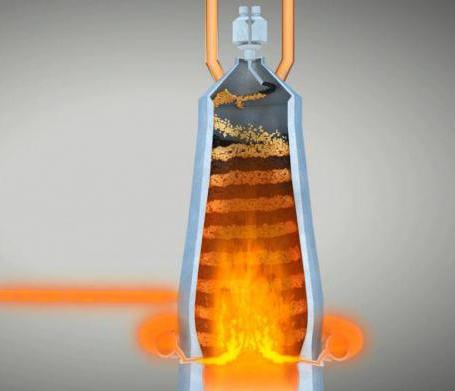What is a blast furnace? This is the heart of metallurgical production. A blast furnace plays an important role in the production process for producing pig iron. Cast iron, in turn, is a raw material for the production of steel, from which steel sheets, pipes, metal profiles and other metal products are subsequently made.

The history of the blast furnace
Blast furnaces appeared in Russia around 1630, European analogues of blast furnace production date from the fourteenth century. The first blast furnaces were charcoal, the supply of cold air was carried out manually. The production wastes were large, and the efficiency of the use of raw materials was low. The desire to more efficiently organize the production of pig iron prompted DB Nielson to patent the invention of hot blast. The air supplied to the furnace was heated to 150 degrees Celsius. And in 1857, E. A. Cowper invented air heaters, which saved a lot of coke. Generally speaking, what is a blast furnace, then it is a furnace for smelting iron ore, for the further production of metal, which is subsequently used in heavy, metal-rolling, transport and other industries.

Blast furnace structure
Cast iron production is an energy-intensive process characterized by the release of a large amount of heat. To understand what a blast furnace is, it is worth presenting a high construction reaching 35 meters. The weight of a loaded blast furnace can be 30 thousand tons. Such a construction requires a solid foundation. It is laid in the form of a monolithic concrete base up to four meters high. In the place where the furnace hearth is planned, the foundation is laid of refractory concrete. All furnace designs are supported by columns.
The horn is located in the lower part of the structure, it accounts for the largest weight: smelted metal, slag and, in fact, the entire blast furnace. The furnace is unloaded through the hearth, and hot air is supplied through special holes through it. To this part of the blast furnace, the highest requirements are imposed on the materials of manufacture, tightness, fire resistance, wear resistance.
Above the hearth there is a working surface in which the process of technological recovery of iron ore takes place, and a charge is located even higher. This is a simplified, schematic description of the design of a blast furnace, in fact it is a complex high-tech structure with strictly defined functions. What is a blast furnace for? Primarily for smelting cast iron.

How the blast furnace works
This is a huge vertical furnace, operating continuously. Raw materials are fed to the furnace from above, through the loading shaft. Raw materials for smelting are coke, iron ore and additives (limestone), which help to extract unnecessary impurities from the ore. The loaded ingredients are heated by hot air in the main part of the blast furnace. During heating, coking coal, burning, emits carbon monoxide, which serves the process of reducing iron ore. Slags that appeared during the reduction of iron ore are combined with additives (limestone). At this stage, the slag is in a liquid state, and the released metal is in a solid state.
The metal descends through the furnace below and undergoes a steaming process. In this compartment of the furnace, the temperature reaches 1200 degrees Celsius, which contributes to the melting of the metal. Slag having a density lower in comparison with the metal remains on the molten surface of the metal, which prevents oxidative processes.The speed with which the process of lowering the iron in the blast furnace is called productivity. The faster it occurs, the greater the blast furnace productivity ratio. The separation of slag and finished cast iron is carried out at the last stage through special holes and has its own technological features.

Blast Furnace Products
In the technological process of blast furnace production, three products are produced:
- Cast iron is divided into two types: foundry and marginal. The ultimate type of cast iron is used in the production of steel. Depending on impurities it is divided into grades.
- Slag is a useful blast furnace waste. It is used in the production of concrete mixtures, pre-crushed.
- Blast furnace gas is used as a fuel in steelmaking.
Now you know what a blast furnace is.








